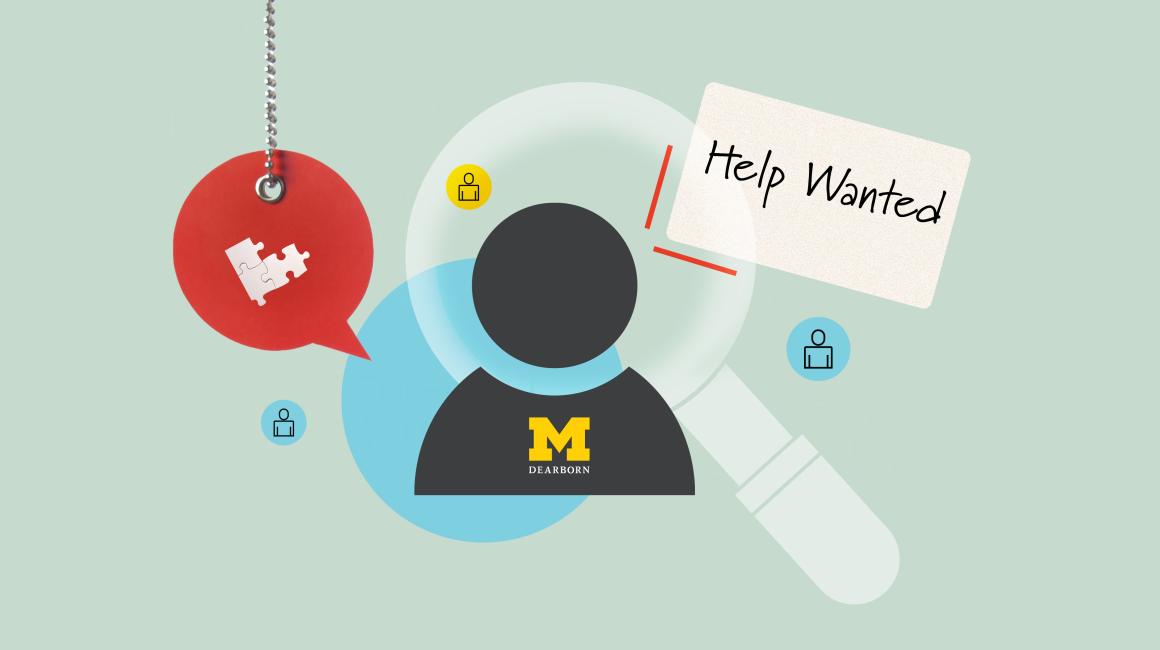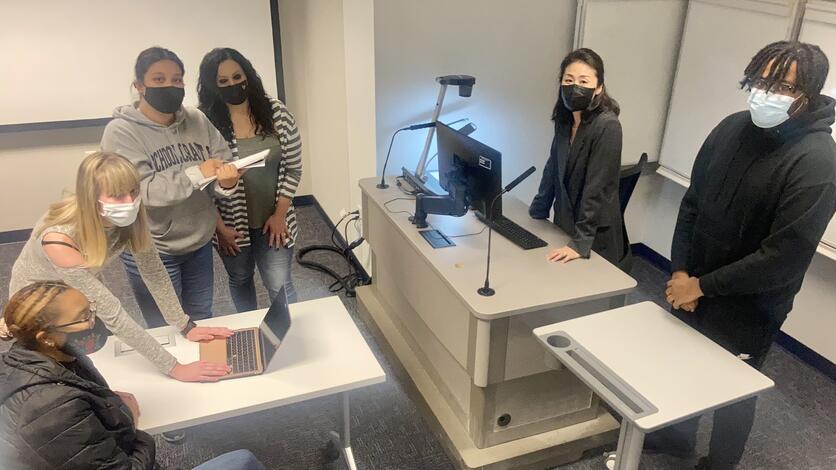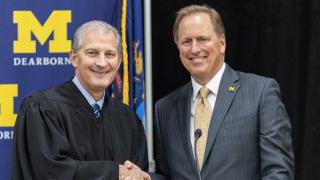
As the nation navigates a worker shortage, College of Business Associate Professor Junghyun (Jessie) Lee's course Talent Acquisition and Management explores the "where are all the workers" question, looks at the resources available and shares ways to connect job-seekers and employers to what they want.
"The relationship between employer and employee is shifting and companies need to understand where people's priorities are so they can successfully compete,” said Lee, whose research expertise is in human resource management (HRM) and organizational behavior.

Junghyun (Jessie) Lee
HRM 406: Talent Acquisition and Management is geared to help students improve their personal effectiveness in recruiting and selecting employees and is required in the Human Resources Management major.
To assist students in seeing how different organizations recruit and hire staff, student groups did research and evaluation projects with the Dearborn Fire Station, the City of Canton, BorgWarner and Real Estate One.
“Professor Lee is focused on giving us application-based learning experiences so we can be better prepared when we graduate,” said College of Business senior Rebekah Carnes. “This class has given me knowledge that I’ll use in my career and connected me to people with HR experience that I can go to for advice.”
In addition to learning how to evaluate staffing processes, the course shared a variety of ways employers can attract talent. Here are three top take-a-ways from the class.
Let technology help.
Midsize companies and mom-and-pop shops don’t have the resources that Fortune 500 companies do when it comes to human resources. This means there is little time or ability to address finding new talent strategically.
That’s where technology comes in. Lee’s class explores the pros and cons of available human resources management information systems and applicant tracking systems through student-led current events reviews and discussion. Some of the classroom chat revolved around artificial intelligence’s role in the hiring process, keyword resume sorting and more.

Lee shared that HR technology can be very beneficial. It creates consistency in application vetting, ensures compliance and eligibility verification, and speeds up the hiring process overall. However, there are some downsides. With the copious amount of resumes submitted per position, applicant tracking systems may be filtering out qualified candidates if instruction is not carefully provided.
When sharing the Sept. 4 Wall Street Journal article “Companies Need More Workers. Why Do They Reject Millions of Resumes?” with the class, College of Business senior Chealsey Jones, said technology should be paired with human oversight. For example, if the qualified talent yield seems low, put time into reviewing the filtered-out resumes to make sure they didn’t miss a good candidate for the role. “Businesses may want to consider having a process in place to review filtered resumes to make sure there’s a qualified candidate who didn’t get overlooked,” said Jones, a Human Resources Management major.
Another consideration for employers is the job posting itself, Lee said. With the systems reviewing resumes based on keywords — which are often pulled directly from the posting — it’s important to have a well-written description. An accurate, well-written positing that communicates the core values of talent philosophy and your employer brand is also beneficial in attracting better candidates to begin with.
“Rewrite ads and job descriptions to emphasize the benefits of working for you, in addition to job qualifications,” Lee said. “This approach often leads to finding a good fit.”
Be open to new recruiting tactics.
Who you know is just as important as what you know. So reach out to your networks to expand the talent pool.
With younger adults on social media, use it to a recruiting advantage to advertise job openings.
Share an image of a workplace perk on Instagram or Facebook. Search LinkedIn for people whose skillsets are comparable to what you have in mind for a role and reach out to them to apply. If you can give people a fun, friendly workplace, create a TikTok video to go along with a job posting — yes, people use TikTok for job connections — to show what the work environment looks like.

There are other creative sourcing routes to go too.
Companies are offering sign-on bonuses to new employees — consider doing a similar program for employee referrals if new hires stay with the company for a set amount of time. College of Business junior Alyssa Zaleski said BorgWarner has a similar program where a staff member gets the bonus after the referred person is employed for nine months.
“Employee referrals are usually reliable because you know someone you can talk to about the company’s mission and vision before applying to see if they're a good fit,” said Zaleski, a Human Resources Management major.
With the Baby Boomer generation age 65 or older by 2030, younger generations may not have the experience necessary to fill many of the jobs left behind. So having an employee connection may help you find someone that has desirable attributes like a positive attitude or strong work ethic and can gain job-related skills through training, college courses or certifications.

Cash isn’t king: People want work-life balance.
We all know that the last year has changed the way employees view and approach work. But why? One answer is that older adults, who were loyal to long-term company relationships, are retiring in large numbers due to eligibility, early leave incentives and COVID-related health concerns. And the skilled workers remaining have different priorities. In short: Work-life balance is more important than money.

Carnes, a Human Resources Management major, said the data she gained through her team’s class research project reinforces this. Working on a staffing project for the City of Canton, employees shared that they were attracted to their roles because of the community connection and available time off.
She wasn’t surprised. In the conversations she has with her friends about career goals, work-life balance and mental wellness are top priorities.
“Of course money is important. But that’s no longer the big incentive that it used to be. We are looking for benefits and culture,” Carnes said. “People want to be managed by supervisors who care for their people. They want a good environment, which is challenging when people are overworked due to turnover and lack of current staff. That is one big thing that’s affecting workplaces.”
In the EY 2021 Work Reimagined Employee Survey, more than half (54%) of employees surveyed globally would consider leaving their job post-pandemic if they are not provided some form of flexibility in where and when they work. And in a recent survey of workers planning to look for a new job post-pandemic, 38% are doing so because of work-life balance challenges.
Benefits wanted more than money include: Family-friendly policies, remote or hybrid work, vacation time, professional development training and tuition assistance, and — if none of those can be provided because of the nature of the job or resources available — a friendly work environment.
To attract talent, Lee said to highlight the rewards programs they offer to job seekers. If you offer benefits like tuition assistance or paying for certification, emphasize it in a posting. And have flexibility, when possible, with your current employees so they share the positive experiences they have with others or on job review sites.
And the practices that bring people in, may also help keep good people with a company.
“The goal is to go beyond finding the right people. You also want to keep them,” Lee said “The benefits of good practices that help with recruiting and hiring will likely benefit employee retention too.”
Article by Sarah Tuxbury. If you’re a member of the media and would like to interview Associate Professor Junghyun (Jessie) Lee about this topic, please drop us a line at UMDearborn-News@umich.edu.




